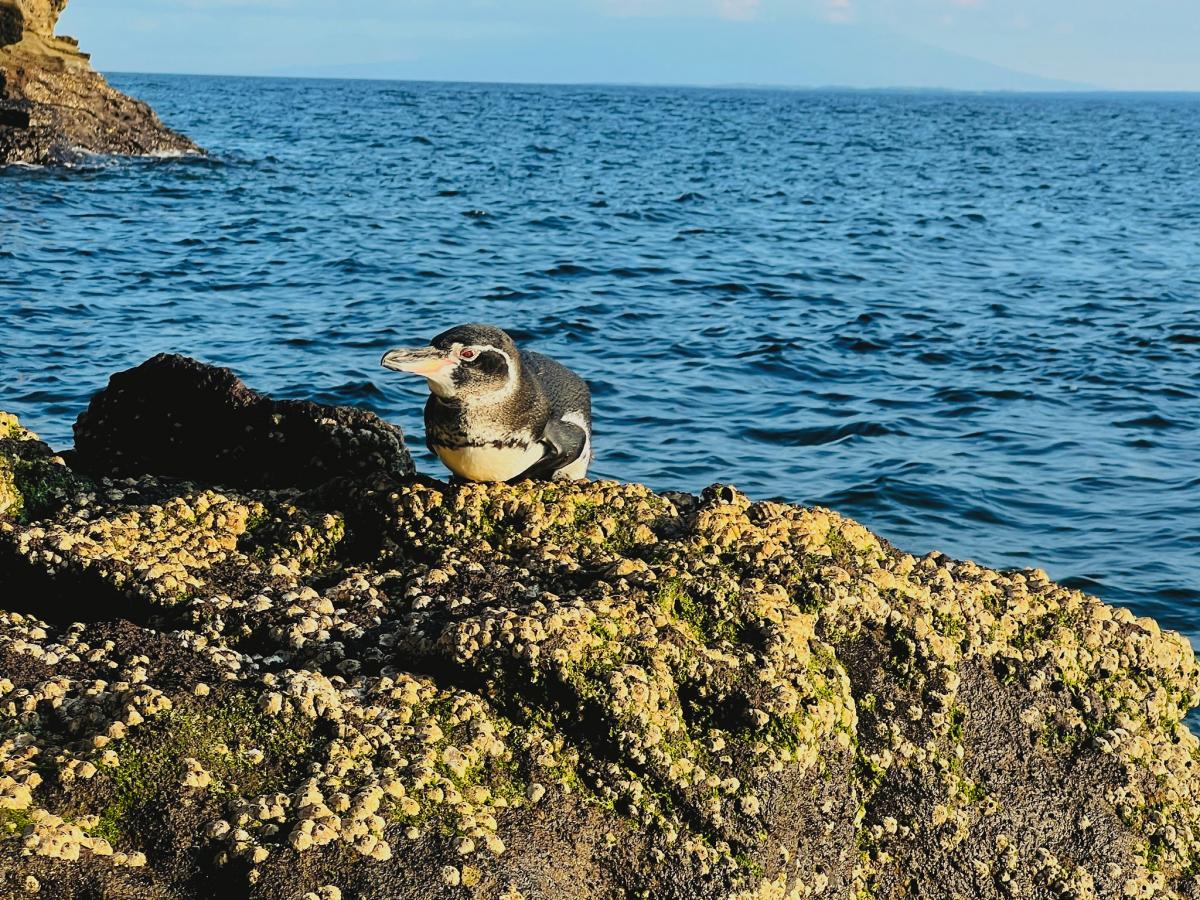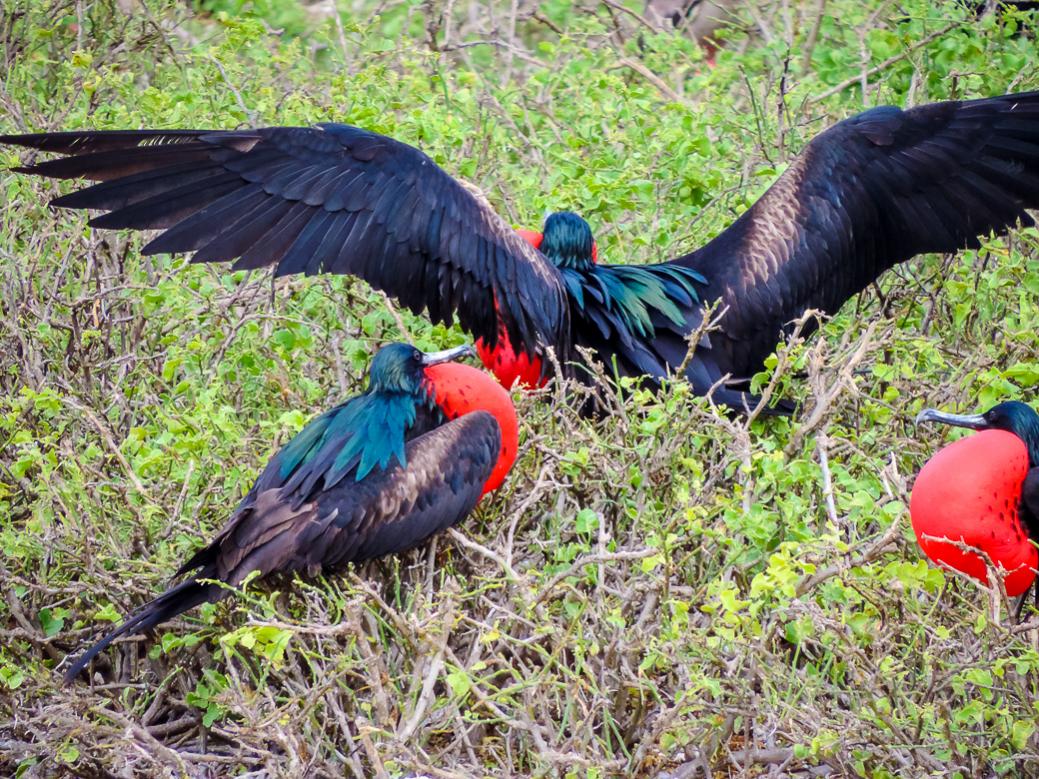HD8G Team will be active from Galapagos Islands, IOTA SA - 004, 18 - 25 April 2025.
Team - HC5VF, PY2DV, PY2EL, PY2MC, PY2PT, PY2WAS, PY3MM, PY4RGS, PY5CC, PY5HSD, PY5KD, PY6HD, PY6RT, PR7AB, PY7XC, PS8RV, PV8DX, VU2RS, YT1AD, YL2KL, N6PSE, K3NQ, WD5COV.
Recent DX Spots HD8G
HD8G Log search They will operate on HF Bands.
QSL via M0URX.
Galapagos Islands - a corner of the planet untouched by civilization
Few tourists who were lucky enough to visit the Galapagos Islands, remained indifferent to their color, bright natural colors and identity of the local people.
The coordinates of this paradise
The geographical location of the Galapagos Islands is the Pacific Ocean, near the equator. This territory falls under the jurisdiction of Ecuador. In total, 19 islands and hundreds of rocks of different heights can be counted in the archipelago. The history of the emergence of the first piece of land here goes back to the era of tectonic activity, about 10 million years ago. The formation of the youngest islands has not yet ended, the eruption of 10 years ago is direct evidence of this.
The local population is scattered on the 2 largest islands - San Cristobal and Santa Cruz. The number of natives - about 23 thousand people (with a total population of the province of 25 thousand inhabitants).
 Galapagos Islands. Author - Kirk K..
Galapagos Islands. Author - Kirk K..
Love at first sight
What distinguishes the Galapagos Islands from other, no less picturesque corners of the earth? First of all, the rich world of flora and fauna. Almost all representatives of flora and fauna of the archipelago are endemics. For example, only here you can see the largest land tortoise, called elephant or Galapagos. The length of its shell reaches 2 meters, and the animal weighs about 400 kg.
In addition to giant tortoises, listed in the Red Books of many countries around the world, on the Galapagos Islands feel great exotic breeds of lizards, iguanas, flamingos, penguins. The ocean waters are home to sharks, sea lions and giant whales. Galapagos gulls, petrels and other no less rare birds circle over the water surface.
The Galapagos was thoroughly explored by Charles Darwin, and his research formed the basis of the theoretical science of evolution. According to the naturalist, this archipelago is “a small separate world”. And modern scientists call the islands no other than “nature's laboratory”.
 Galapagos Islands. Author - Scott T..
Galapagos Islands. Author - Scott T..
The vastness of a national reserve
The discovery of the Galapagos Islands was not a goal, it happened by accident. In 1535, traveler Tomas de Berlanga headed by sea to Peru from Panama. The sailor deviated from his route and stumbled upon these beautiful places. However, until the 1930s, criminals were sent here for hard labor and pirates found shelter here.
After 1930 the policy of the state changed dramatically and Galapagos was recognized as a national reserve. The territory of the modern park occupies up to 97.5% of the island archipelago. The area is also protected by UNESCO. Since 1985. The Galopogos Islands have been recognized as a World Biosphere Reserve. The 70 thousand square kilometers of ocean water around the land is also considered a protected area. The waters around the archipelago are the second largest marine reserve, the first being the Australian Barrier Reef.
The threat to the Galapagos are rare species of animals and plants brought to the islands by pirates. There are a lot of predators in these places: rats, wild cats. But common animals like horses, pigs, sheep and others multiply quite quickly. For paradise islands introduced types of fauna can be called a real ecological disaster - imported from outside, they destroy vegetation and sometimes become a real danger for local residents. Example: the breeding of rats on one of the islands led to the mass destruction of turtle nests, as a result, these exotic animals suspended the reproduction process for more than 50 years.
Today, ecologists began removing alien species of plants and animals from the archipelago to prevent their overpopulation from becoming the death of the Galapagos. The seemingly harmless blackberries, avocados and citrus fruits, for example, have overrun part of the islands. And the shrubs that have always grown here are gradually dying out.
 Galapagos Islands. Author - Kasia Halka.
Galapagos Islands. Author - Kasia Halka.
Tourism business of the Galapagos Islands
Despite the remoteness of the archipelago from civilization, this area does not lose its tourist appeal. Water communication between the islands is associated with the constant noise of motor boats, which is not the most positive impact on the ecological balance.
Each large island has its own name, their Caribbean-Spanish names stir the imagination of impressionable travelers: Fernandina, Española, Isabela, Santa Maria, Santa Cruz and San Salvador. The average price of a trip to Ecuador from Moscow starts from 190 thousand rubles/person for 10 days.
Now a little about the most interesting islands:
- Isabela - the largest of the Galapagos Islands, with numerous lagoons. The waters are teeming with sharks, killer whales and other animals. The main attraction here is Urbina Bay with colorful iguanas, penguins and the largest colony of giant tortoises. The highest point of the entire archipelago, Wolfe Volcano, is also located here. And the crater of another volcano - Sierra Negra, has a huge size, reaching a diameter of 10 kilometers;
- The second largest island. Santa Cruz with a well-developed infrastructure. The city of Puerto Ayora offers tourists a variety of entertainment. The main attractions: scientific station Ch Darwin on the study of turtles, twin craters, unique bays;
- Fernandina is the third largest island in terms of size. Here is located the volcano La Cumbre, tourists are interested in the largest colony of marine iguanas Punta Espinosa, Urbina Bay with picturesque coral reefs. Another island bay, Elizabeth Bay is home to pelicans and penguins;
- San Salvador is a small but very colorful island with black rocks of volcanic origin.
The capital of the Galapagos is located on San Cristobal Island and has the poetic name of Puerto Baquerizo Moreno. The airport is also located here, where all tourists fly to. You can get to the archipelago with connections, the duration of the flight from Quito (Ecuador) is 3 hours, from Guayaquil - 1.5.
Weather on the islands depends on ocean currents and winds. There are a total of 2 seasons on Galopogosas:
- The rainy season is from December to April;
- The dry season is from July to October.
The hottest time here is from December to the end of June, then the temperature slowly decreases. The average annual value fluctuates at +24°C.
The level of ultraviolet radiation of the Galapagos Islands is so high that unprepared for such an aggressive tan tourists burn in minutes. Guides strongly recommend, especially in the first days of rest, use hats with wide brim and effective sunscreen lotions. It is forbidden to swim without permission, it concerns mainly wild beaches - objects of excursion programs. For safe water activities in the archipelago are equipped with excellent beaches, where vacationers in addition to swimming can go windsurfing, snorkeling and diving.
On the most developed (the criterion is used for Ecuador, of course) island of the archipelago - Santa Cruz there is a decent wi-fi, a good Japanese restaurant and a lot of modern, comfortable hotels.
In this corner of developed infrastructure you can easily meet sea lions, which swim up to the shore along the fish markets and beg for various treats. This is the charm of Galopogossi, when wildlife and civilization are so organically intertwined.

